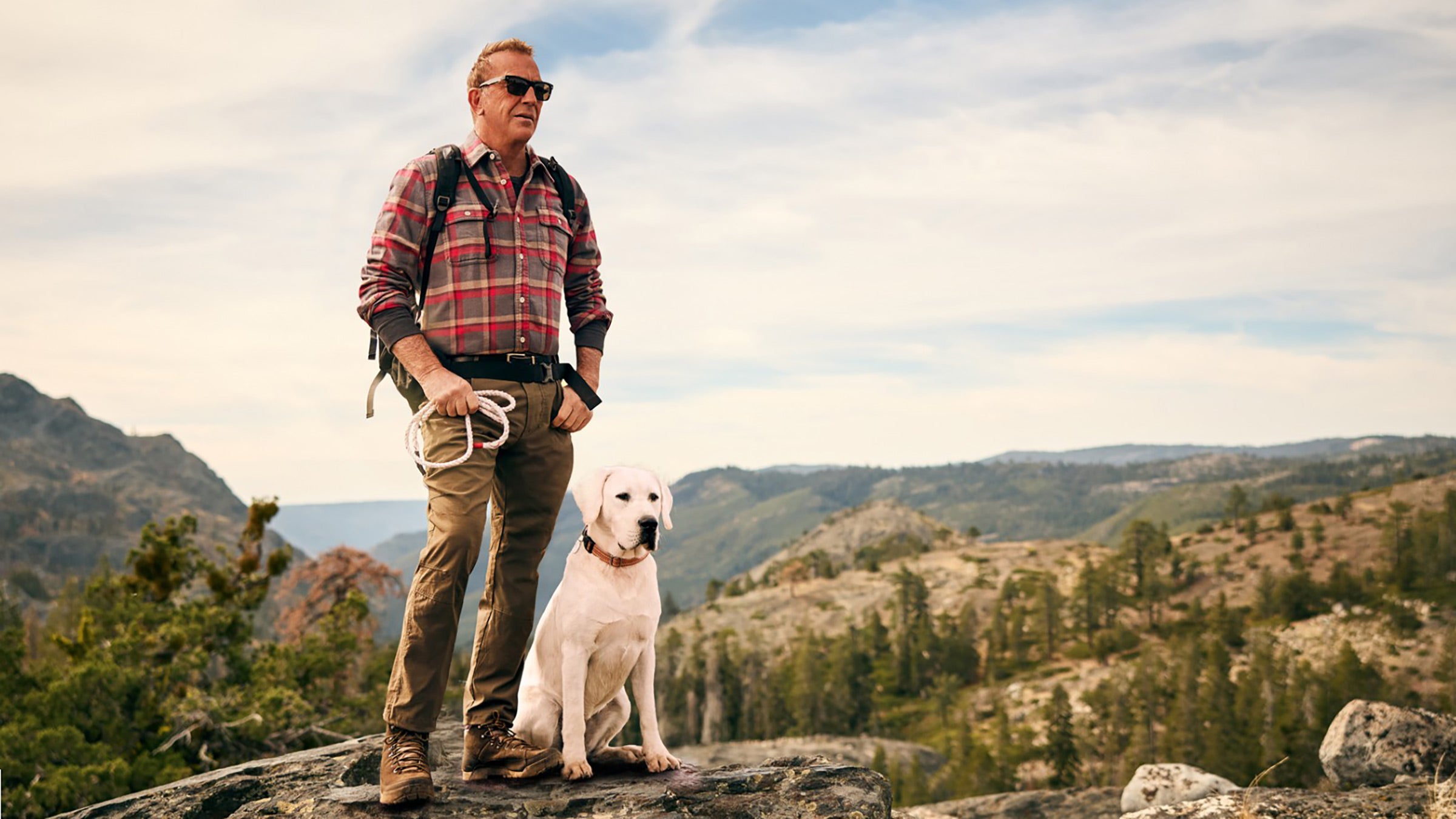Earlier this year, a PR rep from Fox News asked if I’d want to review the conservative network’s upcoming docuseries on the history of Yosemite National Park. Called Yellowstone to Yosemite with Kevin Costner, the three-part series is the brainchild of the Academy Award-winning actor, and the follow up to his 2022 series . As I stared at the email, I wondered: What can Fox News teach me about the importance of the national parks? As it turns out, a lot. But their approach delivered a few surprises.
Yellowstone to Yosemite, which airs Saturday, February 8 on Fox’s streaming service, Fox Nation, tells the often-repeated story of a 1903 camping trip that then-U.S. President Theodore Roosevelt took with naturalist John Muir through Yosemite. Over four days and three nights, the��two men yukked it up around the campfire, admired the soaring monoliths and waterfalls, and became friends. Similarly, Costner, now 70, embarks on his own camping trip within Yosemite as he narrates the story.
In the first episode, Costner quickly establishes the significance of Roosevelt and Muir’s campout. It’s May, 1903, more than 30 years since Yellowstone was established as the first national park. Five other parcels of land have become national parks, but the designation has done little to actually protect their ecosystems. Loggers are plundering giant sequoias in Yosemite and poachers are decimating bison herds in Yellowstone. The federal government, meanwhile, lacks the teeth to stop them. “Congress saw the national parks as a zero-cost initiative. Each park has an unpaid superintendent responsible for enforcing regulations,” Costner says. “It’s not working at all.”
Muir, the famed naturalist, believes the only way to save America’s parklands is by harnessing the power of the president. He invites Roosevelt to Yosemite to show him the wonders of the park up-close, before pitching him on the bold idea of actually protecting the six natural wonders.
And we’re off—over three 45-minute episodes Costner tells the story of the camping trip while weaving in other historic anecdotes and ecological tidbits about Yosemite National Park. Yep, there’s a heroic mini-biography of Teddy Roosevelt. There are Nature Channel-worthy segments about the lifecycle of a Sequoia and the geologic forces that carved the valley. Costner name drops Lynn Hill as the first rock climber to free climb the Nose of El Capitan. There’s even a reenactment of the massacre of Miwok tribespeople that preempted their forced removal from Yosemite in 1851.
But as the docuseries unfolds, Costner also performs some rhetorical jiujitsu that muddies the current political divide around a few topics. He frames the conservation movement as inherently patriotic, and funding the national parks as part of our American heritage. He presents the corporate interests of industry as evil, and the seizing of land from Tribes as cruel. He even tells the viewer that the reintroduction of grey wolves—a wedge issue in many Western states—is something that Roosevelt, a Republican icon, would have supported.
Costner presents these perspectives with a sincere tone that lacks any hint of cynicism or moral superiority. After praising John Muir for advocating on behalf of Yosemite’s trees and rivers, Costner lays down in his sleeping bag as the temperature plummets. “God I love this country,” he says. “Everything about it. Even the cold.”
Costner’s melding of these concepts—patriotism, conservation, American heritage, and honoring Indigenous tribes—helps him sell a contemporary vision to his audience: national parks are worthy of our protection and our tax dollars.
Sure, Costner’s sincerity and mythical retelling of a camping trip may inspire some eye rolls. Still,��I couldn’t help but admire his approach. Perhaps somewhere in Yellowstone to Yosemite is a playbook for bridging the political divide when we debate protecting National Monuments from drilling, or the reintroduction of apex predators, or why we should save endangered species. I don’t watch Fox News, but my parents do, and I firmly believe that they would love Yellowstone to Yosemite, even though it’s essentially a three-hour pitch for the environmental movement.
Costner’s story concludes on a high note. Roosevelt is inspired by Muir, and after he’s reelected he signs the Antiquities Act of 1906, which grants him the power to protect federal lands. He sends the U.S. military to defend the national parks, and he establishes a series of national monuments to honor the legacies of indigenous tribes.
I recently asked Costner about the balancing act in Yellowstone to Yosemite, and whether it was challenging to blend so many disparate socio-political themes in an hour-and-a-half program�� He brushed the question aside with a laugh. You can read my interview below.
Why Kevin Costner Wanted to Tell the Story of Yosemite National Park
OUTSIDE: Why did you want to tell this story in 2025?
Costner: I was not waiting for the right year to tell this story. I recently did the film Horizon and I thought of it back in 1988. With Yellowstone: One Fifty, I realized that we just don’t know our history and the intricacies of the routes we drive and the mountains we look at. With Yosemite, we all think we know the park. But I knew there was a story to tell about Roosevelt and Muir. In this 30-year span after the creation of Yellowstone, there was nobody who could actually protect the parks. Nobody took into account that it would would take manpower and a governmental body to actually protect them. I like these parts of history that seem obvious, but aren’t. And this story had plenty of these elements, so I had a sense that I wanted to share it. I wanted to start with the Native Americans—even if we’re going to highlight Roosevelt and Muir, it was important for me to go that distance and to talk about original inhabitants. I wanted to tell viewers just how tragic things were for them. They’re always in our history and we somehow forget them. They are a part of Yosemite as much as any story we tell.
But I also wanted to show how these two men, of like minds, each had a level of poetry in them that helped them understand that saving the parks was the right thing. I wanted to tell this story without beating people on the the head. I wanted to educate them.
Your story navigates more than a few political topics that are still debated today, such as funding the NPS, reintroducing apex predators, and the constant tug-of-war between protecting federal lands and opening them to drilling or logging. How did you navigate these without seeming partisan?
Ha. I don’t care where the chips fall, and I’m honestly not that careful. I’m not looking to present a side here, I’m just looking to tell the story of who was doing what, who was saying what, and what actually happened. This project isn’t catered to any crowd. It had to get above my bar in terms of its intellectual literature. And I felt like we told the version of the story that I set out to tell. I don’t talk down to my audience or around them. I honestly don’t see the world as being dangerous when I’m telling historical truth. You have to tell the story with all of its warts. Other people might be worried about what I’m going to say. But I didn’t ever worry about it. I never had a single thought about this.
This is your second project around the U.S. National Parks. What about the Parks has attracted your interest in storytelling?
I’m really pleased that national parks are an American idea. Today there are like 1400 national parks around the world, but we set the tone. We came up with the idea that the land could have a higher economic use than just exploiting it—that some day, people would come and visit. But when I think of environmentalism, it isn’t just about the fish in the streams, and the trees. It’s also about the connection to the past. That I can walk where other people walked 100 years ago. And also, to know that a place like Yosemite will be the same forever. And to know that these places aren’t just enjoyed by the wealthy, that everyone can enjoy them. Setting aside land for a national park is such a simple idea, but in reality it takes a fierce attitude to move an idea to being practical, especially when money is at stake.
You’ve spent several decades telling stories about the American West, from��Dances With Wolves to��Yellowstone.��What is it about the West that continually sparks your imagination?
I stumble on these stories, and I know that I’m only going to be able to tell so many of the in my lifetime. Right now I’m flirting with a very historical project that I’ll probably do, and it’s right in the vein of what you’re talking about, but I can’t discuss it here. As Americans, we think we know our history, but you never really know that much about it until you dig down. We read about the Native Americans somewhere in the fourth grade, like one chapter in one book, and that’s it. All of Yosemite was on the backs of people who were exterminated. This great park came on the heels of shipping them off to a river where they would die in anonymity. And they’re not even on a sign anywhere.
We rarely get down to what is human about them. I think that Yosemite gets down to what is human about John Muir and Teddy Roosevelt. People can be touched by the truth. They can be affected by lies, but they can be truly touched by the truth.
This interview was edited for space and clarity.��


